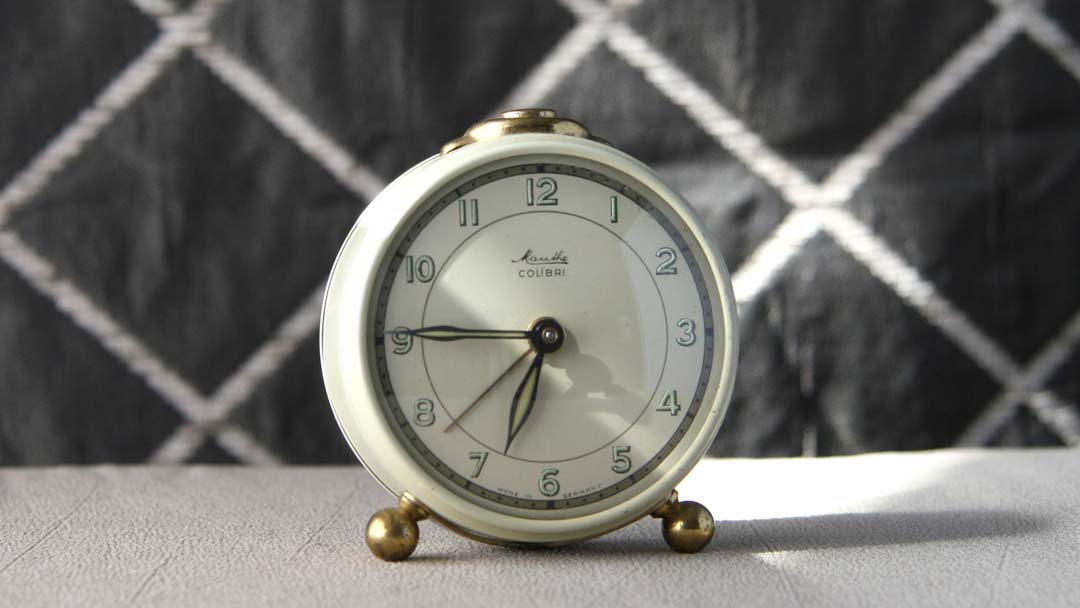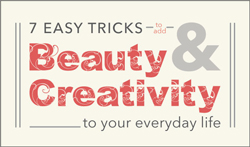We all want a creative life, whether it’s part of our 9-to-5 jobs or during our own time. Having a daily creativity routine ensures that you are flexing your mind in different ways, pursuing interests and passions outside of the workplace and adding beauty (however you define it) into the world.
Although I’ve been making creative work for many years, sometimes it can be a struggle to motivate myself even though I love and value what I do. Here are some strategies that have helped me build a daily creative life and also get back on track when I’ve strayed from it.
Always end with a starting point
The best way to ensure that you can quickly get down to work is to leave yourself a starting point. Creativity is 75% momentum and it’s hard to walk into a work session cold and start something completely new. It’s much easier to get the juices flowing when you can jump right into a task. When you end for the day, try to leave yourself an easy place to pick up on your project: a few more rows to knit, a last proofread to finish up a story, a drawing that is already blocked out. Having an obvious place to start means you can dive right in and build up momentum.
Record your ideas
Is your brain buzzing with a million ideas for new projects? Or are you completely dry and searching for inspiration? Chances are, as a creative person, you’ve experienced both states. Every creative person does. So when you have those great ideas, record them; keep a sketchbook, a notebook, or just write them on a post-it and stick all the notes in a box. When you feel like starting a new project but don’t know what to do or where to begin, you’ll be glad you kept track of these moments of vision.
If you take the day off, then really take it off
Sometimes, as much as we might want to work, our brains sucker punch us with a big roadblock that screams “nope, not today.” It’s good to try and push yourself through a block in your work, but if you can tell it’s not going to happen, then it’s time to take the day off. Fretting and feeling guilty about being stuck wastes mental energy and won’t help. Let go and do something else while the micro-processor in your head mulls over the problem in the background. Often the solution to your impasse will materialize after your mind ruminates on the situation for a while.
Dedicate a special spot for your work
Nothing is worse for productivity and motivation than having all your creative projects spread around your house in a million different places. Maybe you don’t have room for a whole art studio, but respect your efforts by dedicating a work spot so you’re always ready to pick up where you left off. It can be as simple as a basket next to the sofa in which you put your sketchbook, pencils and drawing board.
Forget about the big picture and focus on the small tasks
It’s easy to get overwhelmed when facing a big project and not knowing how or where to begin. In spite of all the talk today of “multi-tasking,” our bodies are really only wired to do one thing at a time, so break creative projects into small, tangible tasks and write them down. You will be surprised how much you can get done over time.
Learn how to create a habit
If you love being creative, it should just be natural and easy to do it every day, right? Unfortunately, that’s not always how it goes. Sometimes creative work feels like a fun respite from ordinary life and sometimes it feels like another chore to finish in a long list of daily obligations. That’s okay! Professional artists feel this way too. In The Power of Habit, author Charles Duhigg breaks habits down into three parts: cue, routine and reward. The cue triggers your brain to follow an automated behavior, the routine is that actual behavior, and the reward tells your brain that the aforementioned behavior is worth remembering again for next time. Duhigg claims the trick to changing habits lies in creating a craving for the reward. As an example, he cites our craving for the minty taste of toothpaste in order to feel fresh — more than the actual reward of clean teeth — as the true motivation that compels us to brush in the morning. So figure out what you crave and use it to your advantage. Personally, I like to listen to music or watch movies as I make my art. I really crave that little mental escape from my harried life and want to jump into art making quickly every day so I can find that peaceful place!
A creative life is a gift to ourselves when our time is often filled with mundane obligations. It’s an exciting, often challenging, practice that can reward us with the freedom to transcend our daily tasks. Whether you are a professional artist or someone who loves being creative in your spare time, you can learn to develop a lifelong practice of creating meaningful work that will inspire you, motivate you and add beauty to the world.


 I create burned wood engravings that combine my love of the textures and patterns found in nature with a deep interest in the unconscious world of dreams, symbols and mythic folklore.
I create burned wood engravings that combine my love of the textures and patterns found in nature with a deep interest in the unconscious world of dreams, symbols and mythic folklore. 
Thank you so much for sharing this! Having a creative routine is something I have been trying to work into my day for the past 6 months or so. I agree that having a set spot for working on art will help and will try it soon. I love that you said that some days are just going to be off and to allow yourself a break. So many other artists say to push through, but I find that those are the days I have to paint over.
Thanks, Kim! It’s a fine line, isn’t it? Figuring out when to push through and when it’s just not going to happen for you.